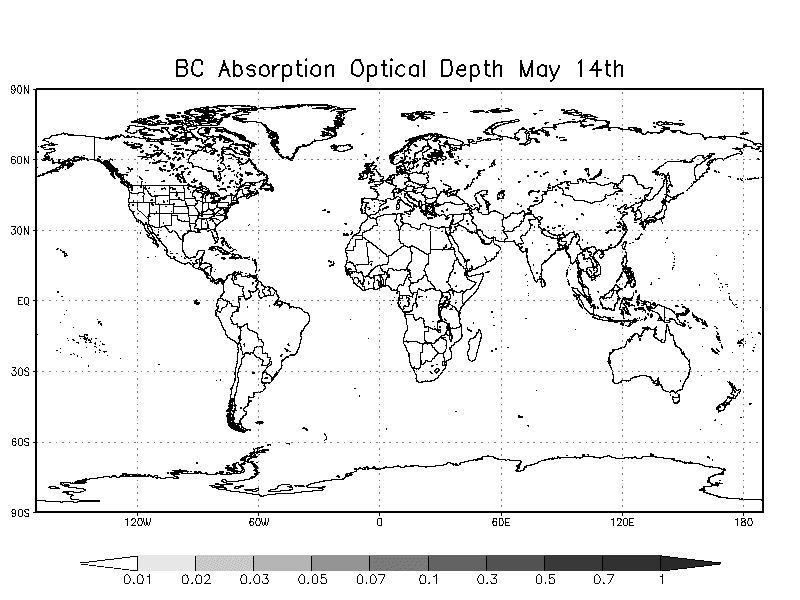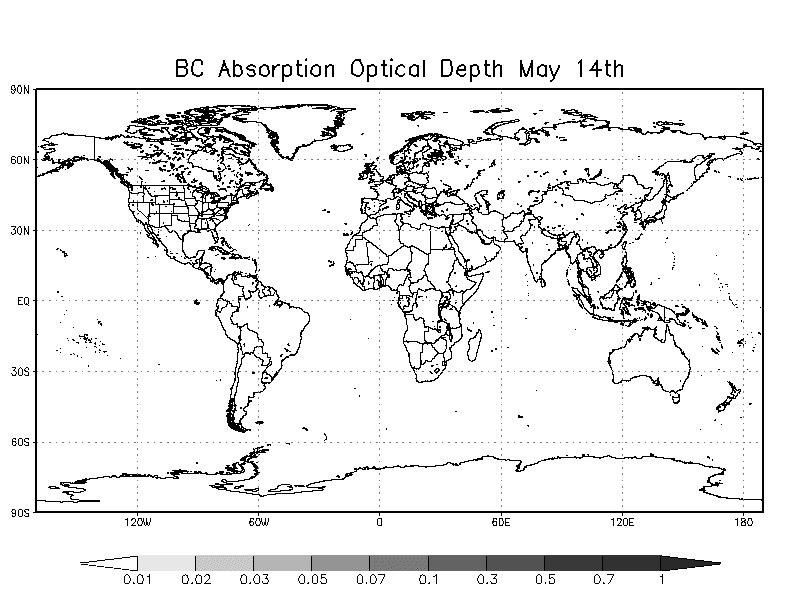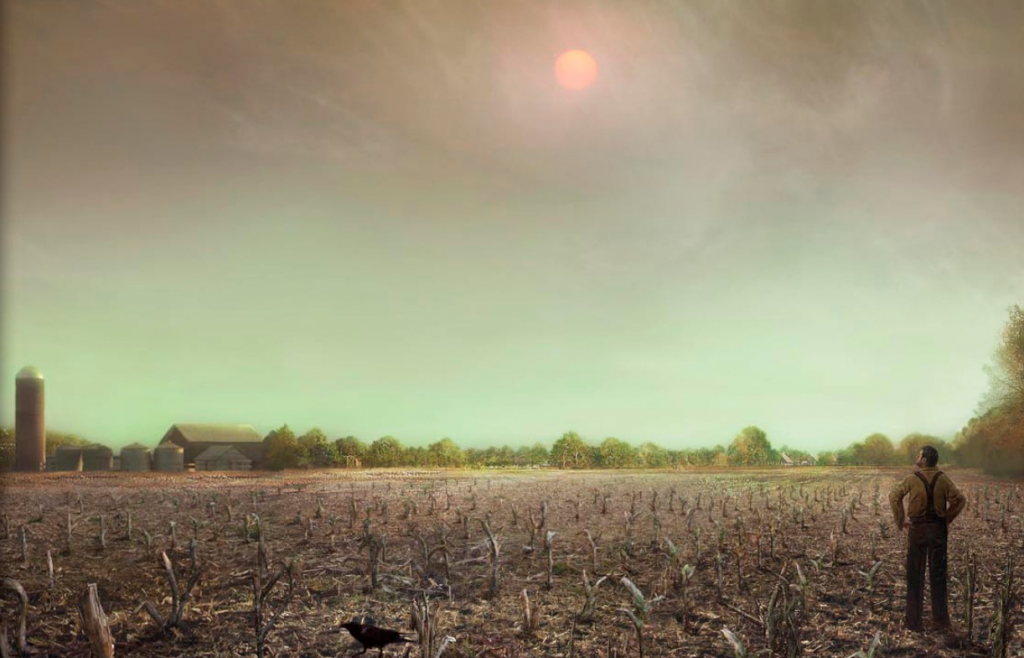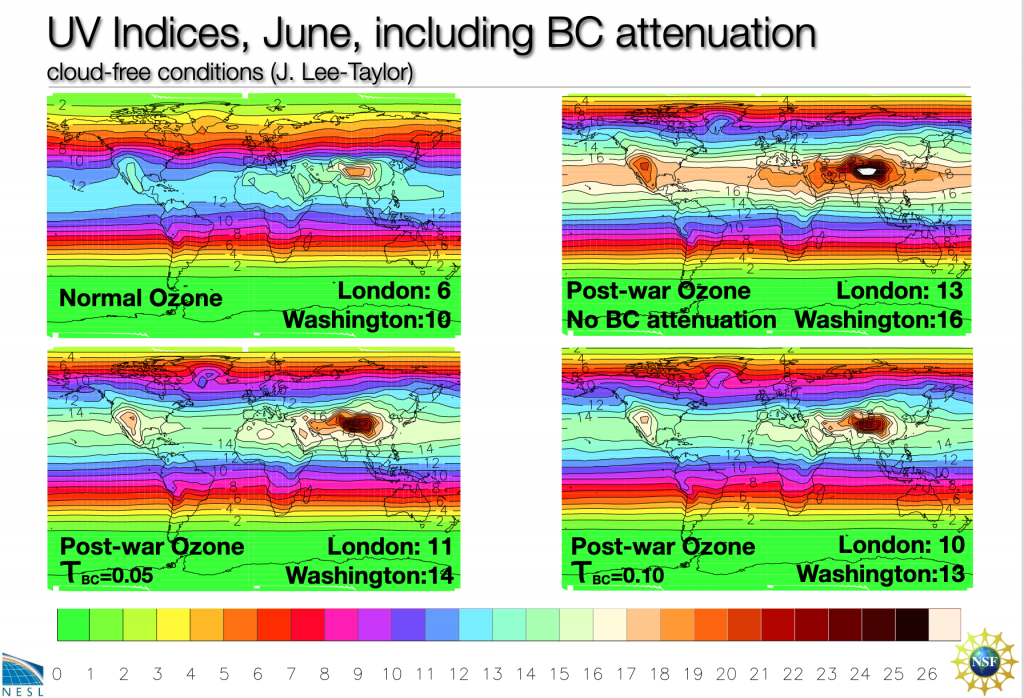In one hour, 3600 nuclear weapons are detonated in US-Russian nuclear war

Massive nuclear firestorms create a global stratospheric smoke layer:
this causes Nuclear Winter resulting in global Nuclear Famine
Following a large nuclear war fought between the US and Russia (could include China, and NATO member states), thousands of nuclear detonations in cities and industrial areas would create enormous nuclear firestorms covering total surface areas of tens of thousands of square miles.

As much as 180 million tons of dark soot and smoke would quickly rise above cloud level into the stratosphere, High winds in the stratosphere will spread around the world in about 10 days time. The smoke will then form a dense global stratospheric smoke layer, which will include both the Northern and Southern Hemispheres.

Temperatures would fall below freezing every day for up to three years.
Because the smoke is above cloud level and cannot be rained out, the smoke layer will remain in the stratosphere for ten years or longer, where it will act to block warming sunlight from reaching the surface of the Earth. In the post-war Northern Hemisphere, during a cloudy day at noon, light levels would be similar to what we experience now at midnight during a full moon.
Without warming sunlight the Earth will dramatically cool down. After two months, the average daily temperatures will drop below freezing and remain below freezing every day for one to three years. Temperatures would be colder than those experienced during the last Ice Age.
Following a large nuclear war, it would be too cold to grow food crops for at least ten years, except perhaps in a few places close to the equator. Most humans and land animals — including those not in the war zones — would eventually die from starvation in a Nuclear Famine.
- 1600 to 2000 US and Russian strategic nuclear weapons are launched (in 2 to 14 minutes) at targets in the US, Europe and Russia.
- Some fraction of the remaining 1600 to 2000 deployed and operational US and Russian nuclear weapons are also detonated
- Hundreds of large cities in the U.S., Europe and Russia are engulfed in massive nuclear firestorms, which burn urban areas covering tens or hundreds of thousands of square miles/kilometers.
- 150 million tons of smoke produced by the firestorms rises above cloud level, into the stratosphere, where it quickly spreads around the world and forms a dense stratospheric smoke layer.
- The dense smoke layer will remain there for many years, perhaps a decade or longer.
- The smoke blocks up to 70% of warming sunlight from reaching the Earth’s surface in the Northern Hemisphere, and up to 35% of the sunlight is also blocked in the Southern Hemisphere.
- In the Northern Hemisphere, the noonday sun would resemble a full moon at midnight.
- In the absence of warming sunlight, surface temperatures on Earth become as cold or colder than they were 18,000 years ago at the height of the last Ice Age
- There would be rapid cooling of more than 38 degree Fahrenheit (20°C) over large areas of North America and of more than 57 degrees Fahrenheit (30°C) over much of Eurasia, including all major agricultural regions
- Two months after the war, minimum daily temperatures in the central regions of the Northern Hemisphere drop below freezing each day for 1 to 3 years.
- Nightly killing frosts would occur for another 7 years.
- Average global precipitation would be reduced by 45% due to the prolonged cold.
- Growing seasons would be virtually eliminated for at least 10 years.
- World grain reserves would be exhausted in a few months.
- The inability to grow food crops for years would cause most humans and land animals to starve to death.
- Massive amounts of radioactive fallout would be generated and spread both locally and globally. The targeting of nuclear reactors would significantly increase fallout of long-lived isotopes.
- Gigantic ground-hugging clouds of toxic smoke would be released from the fires; enormous quantities of industrial chemicals would also enter the environment.
- Already stressed land and marine ecosystems would collapse.
- It would be impossible for many living things to survive the extreme rapidity and degree of changes in temperature and precipitation, combined with drastic increases in UV light, massive radioactive fallout, and massive releases of toxins and industrial chemicals.
- A mass extinction event would occur, similar to what happened 65 million years ago, when the dinosaurs were wiped out following a large asteroid impact with Earth (70% of species became extinct, including all animals greater than 25 kilograms in weight).
- Even humans living in shelters equipped with many years worth of food, water, energy, and medical supplies would probably not survive in the hostile post-war environment.
A nuclear war between India and Pakistan: a total of 100 atomic bombs are detonated in their largest cities, producing a stratospheric smoke layer that creates the coldest weather in the last 1000 years

Nuclear firestorms ignited in the cities of India and Pakistan cause 5 million tons of smoke to rise above cloud level in the the stratosphere.
Should India and Pakistan fight a nuclear war in which each nation had 50 atomic bombs explode in their largest cities, scientist estimate that nuclear firestorm would produce 5 million tons of smoke that would quickly rise into the stratosphere and form a global stratospheric smoke layer. The smoke layer would block about 10% of sunlight from reaching Earth’s surface in the Northern Hemisphere; the blue skies we see now would turn grey. The loss of warming sunlight would cause average surface temperatures to become colder then those experienced during the Little Ice Age.
The smoke layer would remain for years, producing prolonged cold weather that would cause massive crop failures. Global grain reserves in 2021 were estimated to be equal to about a 4-months supply for world consumption. Grain exports from the exporting nations would cease. This would likely cause the 1 to 2 billion people already living near starvation to perish from (nuclear) famine.

The sun would heat the stratospheric smoke layer would to the boiling point of water, 212 degrees Fahrenheit (100°C). The heated smoke would cause a massive destruction of the stratospheric ozone layer that protects the Earth from dangerous ultraviolet UV-B light.
UV-B levels would increase to the point where a fair-skinned person in the southern US, who was outside in the mid-day sun at noon, would suffer a painful sunburn in 7 minutes. These levels of UV could cause blindness in many animals.

see https://www.cesm.ucar.edu/events/wg-meetings/2011/presentations/wawg/mills.pdf
The smoke layer would block 7% of sunlight from reaching the Earth’s surface. Loss of warming sunlight would create the coldest average temperatures experienced in the last 1000 years.
These temperatures would be twice as large as those which followed the largest volcanic eruption in the last 500 years, in 1816, which caused “The Year Without Summer”
- 100 nuclear explosions create massive firestorms in the cities of India and Pakistan.
- 5 million tons of smoke rises above cloud level into the stratosphere and forms a global smoke layer which will remain in place for 10 years.
- The smoke layer will block 7% to 10% of sunlight from reaching the
surface of the Earth. - Loss of warming sunlight creates the coldest average surface temperatures
on Earth in the last 1000 years. - Prolonged cold acts to reduce average precipitation by 40% to 50% in some areas.
- Sunlight heats the smoke in the stratosphere; the hot smoke destroys 25% to 45% of the protective ozone layer above the populated mid-latitudes and 50% to 70% of the ozone above
the northerly latitudes, allowing massive amounts of harmful UV light to
reach marine and terrestrial ecosystems. - The combined decreases in average temperature, precipitation, sunlight and
stratospheric ozone would act to significantly shorten growing seasons and
reduce agricultural production for several years. - Up to 2 billion people would die of starvation from nuclear famine
- Conditions would then slowly return to normal over a period of about a decade.